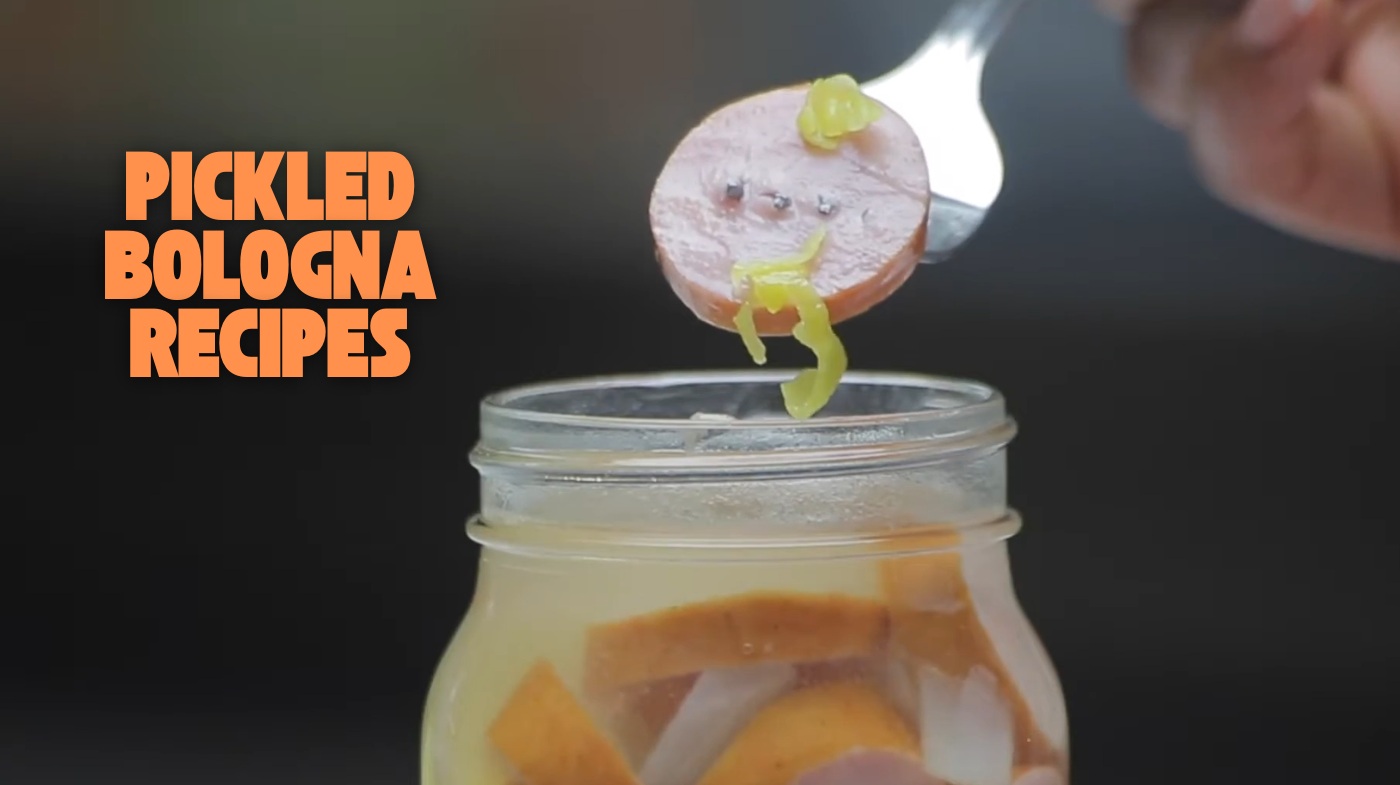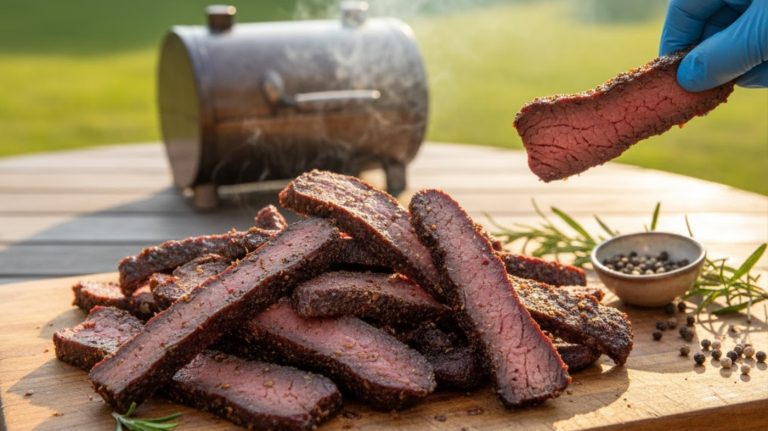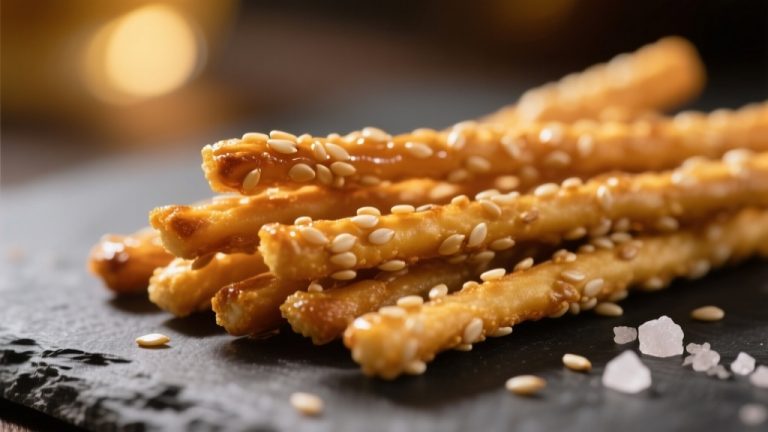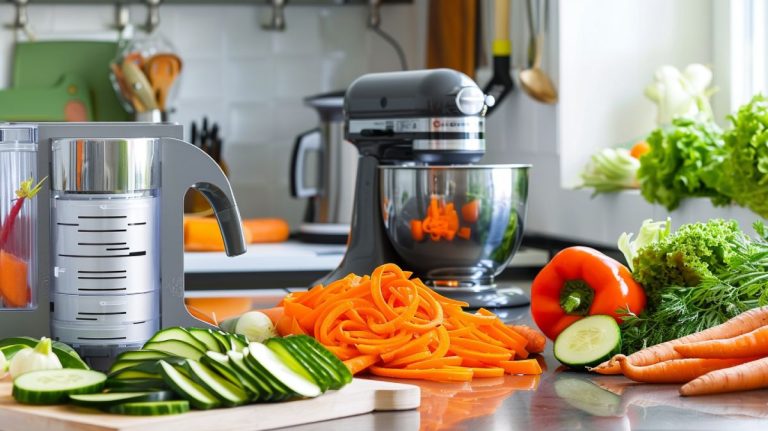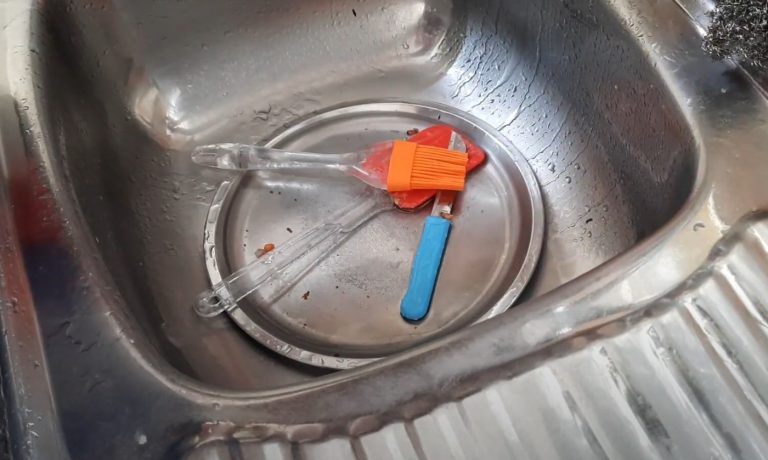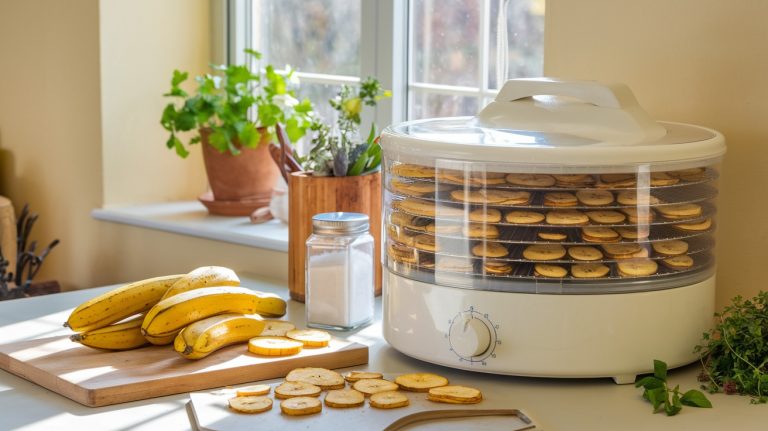Pickled Bologna Recipes: Simple Steps to Flavor Perfection
You can easily make pickled bologna by soaking a bologna ring in a vinegar-based brine mixed with pickling spices like garlic, peppercorns, and bay leaves.
Add sliced onions or jalapeños for extra punch. Use a clean glass jar, keep the bologna submerged, and chill it for a few days to develop tangy flavor.
Whether you want spicy heat or a hint of sweetness, customizing spices and vinegar types is simple. Keep going to discover tips and tricks for perfect pickled bologna every time.
Key Takeaways
- Use 1-2 pounds of bologna with a pickling brine of white vinegar diluted 2:1 with water for the base recipe.
- Add pickling spices like garlic, bay leaves, peppercorns, and sliced onions for flavor depth.
- Marinate the sealed jar in the refrigerator for 3-10 days, ensuring bologna stays submerged in brine.
- Customize flavors with apple cider vinegar, crushed red pepper, honey, or mustard seeds for regional twists.
- Serve pickled bologna on crackers, sandwiches, salads, or as a snack dip with mayo and relish.
Homemade Pickled Bologna Recipe Table
| Ingredients / Tools | Steps / Actions |
|---|---|
| 1–2 lbs ring bologna | Slice or leave whole depending on preference. Ensure it fits snugly in a glass jar. |
| 2 cups white vinegar | Mix with 1 cup water for a 2:1 ratio. This creates the brine base for tang and preservation. |
| 1–2 tsp sugar | Stir into the vinegar-water mix to balance acidity. |
| 1 tbsp pickling spice mix | Combine peppercorns, bay leaves, mustard seeds, and garlic for bold flavor. |
| 1 sliced onion | Add for aroma and depth. Optional: include jalapeños or red pepper flakes for spice. |
| 1 tsp salt | Balances overall flavor and aids preservation. |
| Sterilized glass jar | Use a clean, airtight container to prevent contamination. Avoid metal lids or utensils. |
| Assembly | Layer bologna and spices in jar. Pour cooled brine until contents are fully submerged. |
| Refrigeration | Seal tightly. Store at or below 40°F for 3–10 days, shaking gently daily. |
| Taste Test | Sample after 3 days. Adjust flavors if needed — longer marinating gives stronger tang. |
| Serving Ideas | Serve on crackers, sandwiches, salads, or as a savory snack dip with mayo and relish. |
Essential Ingredients for Pickled Bologna
When you’re ready to make pickled bologna, gathering the essential ingredients sets the stage for a flavorful result.
You’ll need a ring of bologna, usually 1 to 2 pounds, as your main ingredient. The pickling brine starts with white vinegar diluted with water in a 2:1 ratio, balancing acidity and moisture. Using the right balance of ingredients is important to ensure food safety and flavor preservation.
Add 1 to 2 teaspoons of sugar for a subtle sweetness that cuts through the tang. Don’t forget the pickling spices; these often include garlic, pickling spice, peppercorns, and bay leaves, creating a complex aroma.
For added flavor, include aromatics like sliced onions, garlic cloves, and jalapenos if you want some heat. It is important to distribute pickling spice and aromatics evenly in the jars to ensure balanced flavor throughout. Proper preparation and cleaning of ingredients help achieve the best results.
Salt balances everything, while optional ingredients like crushed red pepper or fresh herbs can enhance the final taste.
Step-by-Step Pickling Process
Gathering your ingredients is just the start. Now it’s time to move on to the actual pickling.
Start by sterilizing a clean glass jar large enough to hold your bologna fully submerged. Place the ring bologna snugly inside, add your pickling spices, then pour the vinegar brine over it. The combination of white vinegar and water creates the essential brine base that preserves and flavors the meat. Using a jar with airtight sealing helps maintain freshness throughout the pickling process.
Seal the jar tightly and refrigerate. Let it marinate for at least 3-4 days, checking occasionally to keep the bologna submerged and the jar sealed.
| Step | Action |
|---|---|
| 1. Preparation | Sterilize jar, avoid metal |
| 2. Assembly | Add bologna and spices |
| 3. Brining | Pour brine, seal, refrigerate |
| 4. Patience | Marinate 3-10 days, taste test |
Flavor Variations and Add-Ins
Although the basic pickled bologna recipe is straightforward, you can easily elevate it by experimenting with different flavor variations and add-ins.
Start by choosing your vinegar; white vinegar offers sharp acidity, while apple cider vinegar adds a milder, fruity twist. Adjust the vinegar-to-water ratio to control tanginess. Proper acid balance is key to preserving the texture and flavor during pickling.
For heat, try crushed red pepper flakes, cayenne, or even a splash of Scotch Bonnet hot sauce, dialing the spice level to your liking. Balance the acidity and heat with a touch of sugar, honey, or maple syrup for subtle sweetness.
Don’t forget aromatics like garlic, sliced onions, or mustard seeds to deepen flavor complexity. Fresh jalapeños add crunch and freshness.
Feel free to customize based on your taste or regional preferences, making each batch uniquely yours. Pickled bologna is commonly found from brands like Koegels, Trails End, and Brooks in Midwest grocery stores, making it a beloved regional specialty.
Equipment and Storage Tips
Experimenting with flavors is fun, but picking the right equipment and storage methods ensures your pickled bologna turns out safe and tasty every time.
Use large glass jars with airtight lids to avoid contamination and keep the bologna fully submerged in brine for even pickling. Proper storage also helps prevent bacterial contamination by reducing exposure to air.
Glass or food-grade plastic containers work best since they don’t react with the acidic vinegar mixture.
Before adding the cooled brine, make sure your jars are clean and easy to sterilize.
Once sealed, refrigerate your pickled bologna at or below 40°F and keep it submerged to maintain quality. This method also makes the recipe budget-friendly by minimizing waste and preserving ingredients longer.
Shake the jar daily to distribute spices evenly and always slice with clean utensils to prevent spoilage.
Serving Suggestions and Uses
When you’re ready to serve your pickled bologna, you’ll find it’s incredibly versatile and adds a tangy kick to many dishes.
Try it as a topping on crackers or a charcuterie board to impress guests. For snacks, pair it with cheese, nuts, and fruit, or whip up a quick dip by mixing it with mayo and relish. Applying a protective water-based finish to wooden serving boards can help maintain their appearance and durability.
In sandwiches, layer sliced pickled bologna in sliders, wraps, or deluxe subs for an exciting twist. You can even grind it into spreads for crackers. This pickled bologna is made by soaking thick rounds of ring bologna in a mixture of pickling liquid.
Toss it into salads—think macaroni, potato, or fruit-and-nut combos—to elevate flavors. Don’t forget hot dishes: top baked potatoes, add it to casseroles, or include it in skillet meals and breakfast omelets for a savory boost everyone will love.
Frequently Asked Questions
How Long Does Pickled Bologna Last Unopened on the Shelf?
Think of unopened pickled bologna as a sealed treasure chest. Its contents are safe from time’s erosion if stored right.
You can expect it to last anywhere from several months up to a year on the shelf, especially if vacuum-sealed or shelf-stable. Just keep it cool, dry, and away from sunlight.
Once opened, the clock’s ticking faster, so refrigerate and enjoy within a week or so to savor its best flavor and safety.
Is Pickled Bologna Safe for People With Low Sodium Diets?
Pickled bologna isn’t ideal if you’re on a low sodium diet. It packs a hefty sodium punch, often around 600 to 800 mg per serving, which can quickly push you past your daily limit.
If you really want to enjoy it, keep portions tiny and balance your other meals with low-sodium foods. Otherwise, it’s better to skip it altogether and choose lean, fresh meats without added salt to protect your heart and kidneys.
Can Pickled Bologna Be Frozen for Longer Storage?
Absolutely, you can freeze pickled bologna like it’s auditioning for a spot in the freezer hall of fame.
Just wrap it tight, separate slices with parchment, and stash it in an airtight bag. It’ll keep for 2 to 6 months, depending on how well you package it.
Just don’t expect it to come out fresh as the day you bought it. Freeze burn is the freezer’s version of a bad hair day!
What Is the Nutritional Difference Between Pickled and Fresh Bologna?
You’ll notice pickled bologna has more sodium and carbs than fresh because of the vinegar brine and added sugar.
Both are high in saturated fat and calories, but pickling slightly ups the calorie count due to sugar.
Protein stays about the same, while vitamins and minerals don’t change much.
Just keep in mind pickled bologna is saltier and sweeter, so it’s not the best choice if you’re watching sugar or sodium intake.
Taste Tradition with a Homemade Pickled Twist
Now that you’ve mastered pickled bologna, you’re holding a little jar of magic. Each tangy bite is a dance of flavors that wakes up your taste buds like a sunrise.
Remember, this isn’t just about pickling meat; it’s about turning everyday ingredients into something unforgettable. So, get creative, experiment with spices, and share your delicious results. Your kitchen adventures are just beginning, and every jar tells a story worth savoring. Enjoy the ride.

